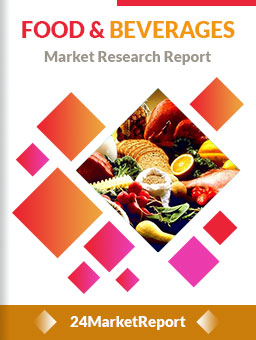
COMPANIES COVERED
DanoneDownload FREE Report Sample
Download Free sampleLow-fat milk, often referred to as lite milk or reduced-fat milk, is a dairy product that has had a significant portion of its fat content removed. Typically, low-fat milk contains less than 2% fat, unless otherwise labeled. The reduction in fat content aims to cater to health-conscious consumers seeking lower calorie intake and reduced saturated fat consumption while still enjoying the nutritional benefits of milk, including protein, calcium, and essential vitamins such as B12 and D. Low-fat milk is widely used not only as a beverage but also in cooking, baking, and food manufacturing industries.
Market Size
Global Low Fat Milk market is valued at USD 3500 million in 2024 and is projected to grow to USD 4487.52 million by 2032, demonstrating a Compound Annual Growth Rate (CAGR) of 2.80% over the forecast period.
This growth is driven by rising awareness of health and wellness, increasing lactose intolerance diagnosis (which leads consumers to low-fat and lactose-free options), and a growing preference for low-calorie diets.
Regionally, North America holds a significant portion of the market, valued at USD 956.30 million in 2024, with a CAGR of 2.40% projected from 2025 through 2032. The U.S. remains the leading contributor due to widespread consumption patterns, advanced dairy processing technologies, and consumer inclination toward healthy dietary practices.
Market Dynamics (Drivers, Restraints, Opportunities, and Challenges)
To know more about market statistics, Download a FREE Sample copy
Drivers
Health Consciousness: Increasing consumer awareness regarding health and wellness is a primary driver. The desire to reduce fat intake while maintaining protein and calcium levels makes low-fat milk a preferred option.
Rise in Dairy-Based Applications: Low-fat milk is widely used in confectionery, bakery, beverages, and dessert segments, increasing its market demand.
Government Campaigns: Public health authorities globally have endorsed low-fat dairy as part of a balanced diet, further fueling its market growth.
Restraints
Taste and Texture: A segment of consumers perceives low-fat milk as less flavorful and creamy compared to whole milk, which can hinder adoption.
Availability of Alternatives: The growing popularity of plant-based milk (like almond, oat, and soy milk) poses a challenge to the traditional dairy sector.
Opportunities
Product Innovation: Technological advancements in dairy processing offer opportunities to enhance taste and texture while preserving low-fat content.
Emerging Markets: Developing countries are witnessing rising middle-class income and urbanization, creating a favorable environment for market penetration.
E-commerce Expansion: The rise of online grocery and dairy delivery platforms enables better market reach and consumer accessibility.
Challenges
Supply Chain Issues: Perishability of dairy products like milk and the need for cold chain logistics can increase operational costs.
Price Sensitivity: In price-sensitive markets, low-fat milk may struggle against cheaper alternatives or traditional full-fat milk.
Regional Analysis
Competitor Analysis
The global low-fat milk market is highly competitive, with key players leveraging a mix of innovation, branding, and distribution strategies to gain market share.
Danone: A global leader in dairy and health foods, Danone offers a wide range of reduced-fat dairy products. Their focus on sustainability and nutrition gives them a competitive edge.
The Coca-Cola Company: Through its Fairlife brand, Coca-Cola offers ultra-filtered, low-fat milk, carving out a premium niche in the U.S. market.
Nestle S.A.: With a wide global presence, Nestle markets reduced-fat milk under various sub-brands and focuses heavily on fortified dairy products.
Organic Valley: A cooperative brand popular in North America, it emphasizes organic, ethically sourced, and reduced-fat milk.
Yili & Mengniu: Leading Chinese dairy giants focusing on health-conscious product portfolios, rapidly expanding their footprint in Asia-Pacific.
The competitive landscape is further enriched by regional players like Dutch Lady, Farm Fresh, and Bright Dairy and Food, which cater to specific demographic preferences and regional tastes.
Global Low Fat Milk Market: Market Segmentation Analysis
Low Fat Milk Market provides a deep insight into the global Low Fat Milk market, covering all its essential aspects. This ranges from a macro overview of the market to micro details of the market size, competitive landscape, development trend, niche market, key market drivers and challenges, SWOT analysis, value chain analysis, etc.
The analysis helps the reader to shape the competition within the industries and strategies for the competitive environment to enhance the potential profit. Furthermore, it provides a simple framework for evaluating and assessing the position of the business organization. The report structure also focuses on the competitive landscape of the Global Low Fat Milk Market. Low Fat Milk Market introduces in detail the market share, market performance, product situation, operation situation, etc., of the main players, which helps the readers in the industry to identify the main competitors and deeply understand the competition pattern of the market.
In a word, Low Fat Milk Market is a must-read for industry players, investors, researchers, consultants, business strategists, and all those who have any kind of stake or are planning to foray into the Low Fat Milk market in any manner.
Market Segmentation (by Application)
Desserts
Bakery
Confectionery
Beverages
Others
Market Segmentation (by Type)
Key Company
Geographic Segmentation
FAQ Section
What is the current market size of the Low Fat Milk Market?
Which are the key companies operating in the Low Fat Milk Market?
What are the key growth drivers in the Low Fat Milk Market?
Which regions dominate the Low Fat Milk Market?
What are the emerging trends in the Low Fat Milk Market?
Key Benefits of This Market Research:
Industry drivers, restraints, and opportunities covered in the study
Neutral perspective on the market performance
Recent industry trends and developments
Competitive landscape & strategies of key players
Potential & niche segments and regions exhibiting promising growth covered
Historical, current, and projected market size, in terms of value
In-depth analysis of the Low Fat Milk Market
Overview of the regional outlook of the Low Fat Milk Market:
Key Reasons to Buy this Report:
Access to date statistics compiled by our researchers. These provide you with historical and forecast data, which is analyzed to tell you why your market is set to change
This enables you to anticipate market changes to remain ahead of your competitors
You will be able to copy data from the Excel spreadsheet straight into your marketing plans, business presentations, or other strategic documents
The concise analysis, clear graph, and table format will enable you to pinpoint the information you require quickly
Provision of market value data for each segment and sub-segment
Indicates the region and segment that is expected to witness the fastest growth as well as to dominate the market
Analysis by geography highlighting the consumption of the product/service in the region as well as indicating the factors that are affecting the market within each region
Competitive landscape which incorporates the market ranking of the major players, along with new service/product launches, partnerships, business expansions, and acquisitions in the past five years of companies profiled
Extensive company profiles comprising of company overview, company insights, product benchmarking, and SWOT analysis for the major market players
The current as well as the future market outlook of the industry concerning recent developments which involve growth opportunities and drivers as well as challenges and restraints of both emerging as well as developed regions
Includes in-depth analysis of the market from various perspectives through Porters five forces analysis
Provides insight into the market through Value Chain
Market dynamics scenario, along with growth opportunities of the market in the years to come
6-month post-sales analyst support
Customization of the Report
In case of any queries or customization requirements, please connect with our sales team, who will ensure that your requirements are met.
Chapter Outline
Chapter 1 mainly introduces the statistical scope of the report, market division standards, and market research methods.
Chapter 2 is an executive summary of different market segments (by region, product type, application, etc), including the market size of each market segment, future development potential, and so on. It offers a high-level view of the current state of the Low Fat Milk Market and its likely evolution in the short to mid-term, and long term.
Chapter 3 makes a detailed analysis of the market's competitive landscape of the market and provides the market share, capacity, output, price, latest development plan, merger, and acquisition information of the main manufacturers in the market.
Chapter 4 is the analysis of the whole market industrial chain, including the upstream and downstream of the industry, as well as Porter's five forces analysis.
Chapter 5 introduces the latest developments of the market, the driving factors and restrictive factors of the market, the challenges and risks faced by manufacturers in the industry, and the analysis of relevant policies in the industry.
Chapter 6 provides the analysis of various market segments according to product types, covering the market size and development potential of each market segment, to help readers find the blue ocean market in different market segments.
Chapter 7 provides the analysis of various market segments according to application, covering the market size and development potential of each market segment, to help readers find the blue ocean market in different downstream markets.
Chapter 8 provides a quantitative analysis of the market size and development potential of each region from the consumer side and its main countries and introduces the market development, future development prospects, market space, and capacity of each country in the world.
Chapter 9 shares the main producing countries of Low Fat Milk, their output value, profit level, regional supply, production capacity layout, etc. from the supply side.
Chapter 10 introduces the basic situation of the main companies in the market in detail, including product sales revenue, sales volume, price, gross profit margin, market share, product introduction, recent development, etc.
Chapter 11 provides a quantitative analysis of the market size and development potential of each region during the forecast period.
Chapter 12 provides a quantitative analysis of the market size and development potential of each market segment during the forecast period.
Chapter 13 is the main points and conclusions of the report.

Speak to our Custom Research Team and get the Custom Research in a budget
Custom ResearchFrequently Asked Questions ?
A license granted to one user. Rules or conditions might be applied for e.g. the use of electric files (PDFs) or printings, depending on product.
A license granted to multiple users.
A license granted to a single business site/establishment.
A license granted to all employees within organisation access to the product.
Upto Working 24 to 48 hrs
Upto 72 hrs max - Weekends and Public Holidays
Online Payments with PayPal and CCavenue
Wire Transfer/Bank Transfer
Hard Copy




 Industry Market Size
Industry Market Size SWOT Analysis
SWOT Analysis Industry Major Players
Industry Major Players Revenue Forecasts
Revenue Forecasts Historical and Forecast Growth
Historical and Forecast Growth Profitability Analysis
Profitability Analysis
























